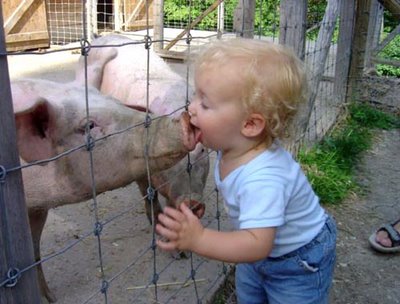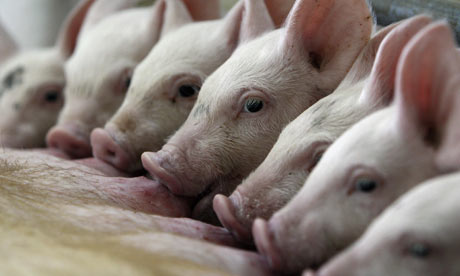
Swine flu is “an acute and highly contagious respiratory disease of swine caused by the orthomyxovirus, a respiratory system disease, thought to be the same virus that caused the 1918 influenza pandemic.” This outbreak began in late April 2009 in Mexico, and has now been reported in over 70 other countries.
Swine Flu: the 2009 blast from the past...

The flu outbreak of 1918 took the lives of nearly 500,000 Americans and 20 million worldwide. This scare is often revered as a potential catalyst for the fearful reaction of the world to the recent outbreak of swine flu. In February 1976, a 19 year old private at Fort Dix Army base was killed by swine flu and hundreds of other soldiers were infected. President Gerald Ford did not want a repeat of the 1918 flu epidemic, and thus called for a nationwide vaccination program at a cost of $135 million (which is about $500 million in today's money). Weeks later, people began developing Guillain-Barré syndrome, a paralyzing nerve disease that can be caused by the vaccine. More than 30 people had died of the condition by April of that year. Although the vaccine was not successful, swine flu did not become the epidemic that many people predicted it would be in 1976. However, many experts claim that the gerneration exposed to the 1976 outbreak are far less likely to contract the virus as someone of a younger or older age.
HOW WAS IT SPREAD?
This flu was spread by pigs and birds to humans all around globe. Around 55 million people in the United States were infected from April to December last year (According to the United States Center for Disease Control and Prevention, or CDC). The World Health Organization said that at least 3,205 people in the world have died from swine flu since the virus began spreading in April. Swine flu has spread via travelers to all corners of the globe. This disease is most often transmitted from person to person. The flu spreads very much like the seasonal flu, through coughing, sneezing, and also touching.
Should YOU be worried about the DANGER of swine flu?
To a certain extent. One should be aware of the possiblity of contracting the virus. H1N1 is especially dangerous for young, healthy adults. But the numbers show that the swine flu is not all that dangerous, only one in 143,000 Americans have contracted symptoms serious enough to be hospitalized. In addition, only one in 333,000 Americans have died from the disease. Doctors are able to test for swine flu with a sample from the respiratory tract. It is taken from a nasal swab. For the most part, swine flu has proven to be both preventable and treatable.

How do they distribute the vaccine?
The vaccine first goes to pregnant women, little children, then young adults under the age of 25 years. Once the vaccines are dispersed to those groups of people, it will then be give to the rest of the population.
Vaccine Efficacy and Challenges
The vaccination is not very efficacious in killing the disease safely and efficiently. The vaccine has proven to sometimes be more harmful than the disease itself. The vaccine has many side effects including reactions as severe as paralysis (see video on Biotechnology Innovations tab). Challenges in the research of swine flu are that it is hard to tell whether someone is actually suffering from the influenza virus or some other illness. The symptoms of swine flu are similar to many other diseases including the seasonal flu, severe food poisoning, and various stomach viruses. It is a relatively new outbreak, so not much research has been done on this disease. There was an H1N1 outbreak in 1976.
How will AMERICA treat swine flu?
The process for treating most any disease is an arduous one. It has turned out that less than 20% of the people showed a positive influenza lab test. It is so difficult to tell the difference between swine flu and any other illness because the symptoms for swine flu are the similar including headaches, coughs, fatigue, runny nose, and chills. President Obama’s plans for swine flu are for schools to take an active part in stopping the spread of the virus. The President also wants Americans to develop contingency plans, like closing down schools or businesses if they if there are strong cases of the flu in them. Technology does help speed up the research process, although a truly helpful vaccine is still in production. Although there are many challenges to studying swine flu, as more lab tests and studies are done our society is closer and closer to an effective remedy.
THE SWINE FLU AND YOU!
To prevent the spreading of swine flu one can get the vaccine, consistenly wash their hands, avoid touching eyes, mouth, or nose, or avoid being around sick people.